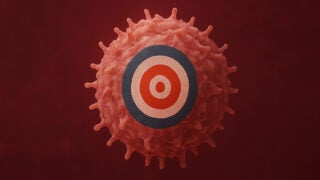
It’s Time to Rethink Hormone Therapy for Women, Says Heart Health Scientist
A new study may change views on hormone replacement therapy and its role in women’s health.
Doctors used to routinely prescribe hormone replacement therapy to women to ease discomfort as they approach menopause, for symptoms ranging from night sweats to irritability. But in the early 2000s, its use plummeted.
Today, USC medical researcher Howard Hodis is driven by a singular goal: to prove the benefits of hormone replacement therapy and undo the harm he says has been done to women’s health over the past 20 years. He runs a multimillion-dollar, National Institutes of Health-funded study to see how hormone replacement therapy affects women’s thinking and cardiovascular health.
Hormone replacement therapy contains the female hormone estrogen, restoring some of women’s estrogen levels that decline as they age. Besides fighting hot flashes, it helps prevent bone loss and fractures. Over 20 years, though, large studies observing the health of women also noticed something else: Those on the therapy had less heart disease, the leading killer of American women.
Hormone replacement therapy is linked to cutting the number one cause of death by about half for the women who opted to take it
Howard Hodis
“Hormone replacement therapy is linked to cutting the number one cause of death by about half for the women who opted to take it,” says Hodis, who holds the Harry J. Bauer and Dorothy Bauer Rawlins Professorship in Cardiology at the Keck School of Medicine of USC.
Then came the Women’s Health Initiative in 2002. This randomized clinical trial made news when it suggested that participants who received hormone replacement therapy had an increased risk of breast cancer with no benefits to their heart health. Doctors began shying away from the therapy, as did many women.
To Reap Benefits of Hormone Replacement Therapy, Sooner is Better
The studies that found hormone therapy lowered the risk of heart attack involved tens of thousands of women between the ages of 35 and 55. They started to take the medication when they first began to feel uncomfortable or as they reached menopause. In the Women’s Health Initiative study, though, the investigators tested a much older population with an average age of 63. That’s more than a decade after women typically reach menopause.
This led to a new idea: The therapy might protect heart health with less risk of breast cancer if women take it before they turn 60.
For hormone therapy to slow down heart disease, a woman’s blood vessels need to be clean and healthy, Hodis says. If vessels are already diseased—which can happen once women are well beyond menopause—estrogen won’t help much.
Women who started hormone therapy within six years of menopause had less hardening of their arteries.
Hodis and his colleagues investigated this theory in a study that included hundreds of healthy postmenopausal women. Their results—published in the New England Journal of Medicine in 2016—showed promise. Women who started hormone therapy within six years of menopause had less hardening of their arteries, known as atherosclerosis, and that translates to lower heart attack and stroke risk. But it didn’t help women in the study who were already 10 years past menopause.
Researchers are still trying to understand why hormone therapy is more effective in women closer to menopause, but Hodis has a theory.
Estrogen sends signals to cells by interacting with what are called receptors. Imagine that estrogen is a key and a receptor is a keyhole. “The further a woman gets from menopause, the more the keyhole disappears,” he says. “You can have all the keys you want, but if they can’t get into the lock and turn it, the cells can’t respond to the estrogen.”
USC Doctor Searches for Truth about Hormone Therapy for Women
Hodis is conducting more studies into why hormones might fight brain fog, inflammation and other changes that happen alongside menopause. His newest investigation tests a combination of conjugated estrogen and bazedoxifene, which isn’t a hormone but works like one in the body. Hodis believes it could protect against uterine and possibly breast cancer. Participants in the Advancing Postmenopausal Preventive Therapy trial are women aged 40 to 59 within six years of menopause. Half will get the medication, and the other half will receive a placebo. The researchers will follow them for three years and see if the medication reduces atherosclerosis and cognitive decline.
Hodis is hopeful that the results will back up his timing theory and change minds about the benefits of hormone replacement therapy for heart health. Before the Women’s Health Initiative study in 2002, 25% of U.S. women were on the treatment. Today, it’s only about 4%.
53% of U.S. women die from cardiovascular disease.
That has implications for quality of life and longevity, given that 53% of U.S. women die from cardiovascular disease. Hormone therapy also helps prevent bone loss, which is critical for older women. One in 10 women who break their hip after age 70 die.
“Hormone therapy has gotten a bad rap,” Hodis says. “It is important to appreciate that adverse outcomes reported from the Women’s Health Initiative for hormone replacement therapy—breast cancer, blood clotting—are rare events, especially when women start the therapy close to menopause. Without proper context, the misperceptions have far outpaced reality.”



